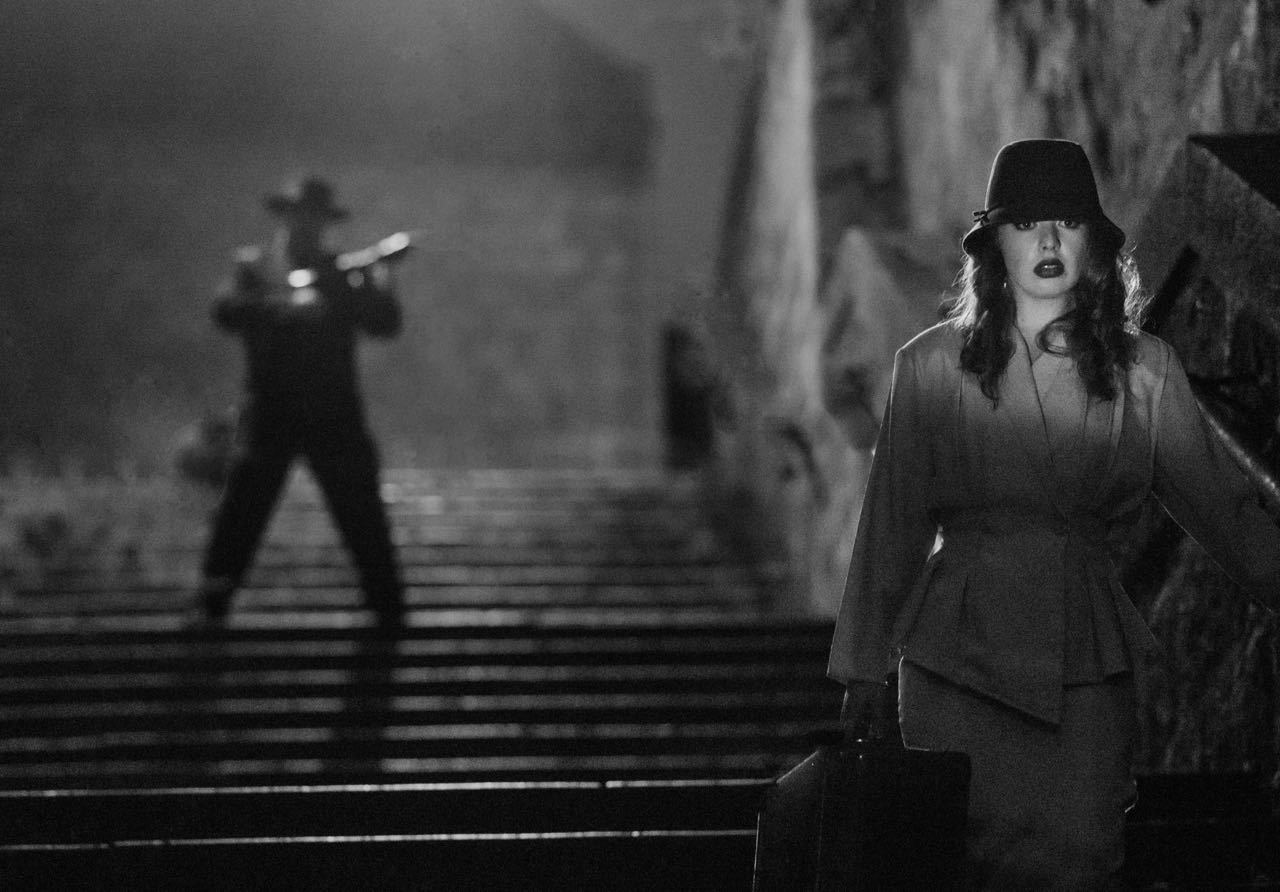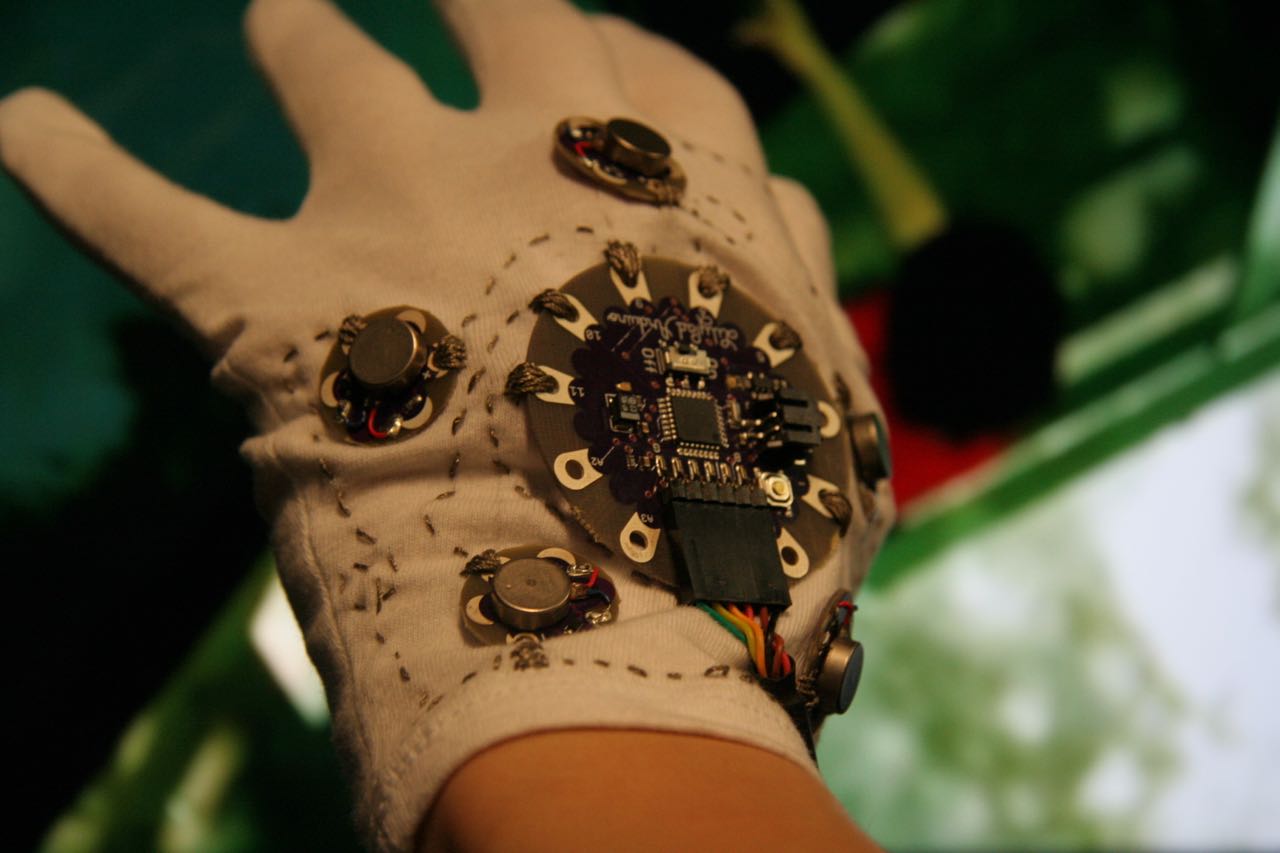A magazine where the digital world meets the real world.
On the web
- Home
- Browse by date
- Browse by topic
- Enter the maze
- Follow our blog
- Follow us on Twitter
- Resources for teachers
- Subscribe
In print
What is cs4fn?
- About us
- Contact us
- Partners
- Privacy and cookies
- Copyright and contributions
- Links to other fun sites
- Complete our questionnaire, give us feedback
Search:
Mood gloves
by Paul Curzon, Queen Mary University of London

When we watch a film, it's not just the pictures that make the experience, it's the soundtrack too. The music and sound effects play a big part in setting the mood of a film. They matter. If you are to get the sinking feeling in your stomach or feel the shivers down your spine, it's probably the music. Antonella Mazzoni, a PhD student on QMULs Media Arts Technology programme, wondered if other senses could contribute too ... and designed a Mood Glove to find out.
Vibrations
We use touch as well as sight and sound to sense the world. This kind of 'haptic feedback' is used, for example, in phones that vibrate to tell us someone is calling. Antonella wondered if haptic feedback could heighten our mood while watching films in the way sounds do.
To test her ideas she created a series of gloves. They had simple electronics built in to them that caused small pads to vibrate against the hand. She could control the order they vibrated and also the strength and frequency of the vibration. Early experiments showed it was best to make the pads vibrate on the back of the hand: when placed on the palm they tended to tickle too much. She also found that the positions of the vibrations did not make a big difference to moods, so she placed them in a simple circle.
Moods
Our moods and emotion can be broken into two parts: our levels of 'arousal' and of 'valence'. Arousal is to do with the intensity of the mood. Being angry, delighted, alarmed and excited are all high arousal moods, whereas being bored, tired, sleepy and calm are low arousal ones. Valence is instead about the level of pleasure involved. High valence moods are pleasant and include being delighted, happy or calm, whereas low valence moods are unpleasant, such as being afraid, annoyed, depressed or bored. Together they give a standard way to rate mood.
Antonella next collected lots of film clips for use in her experiments. A series of volunteers watched the clips while wearing the glove and rated the experience in terms of their arousal and valence while watching them. Using these ratings as a baseline, she then ran experiments to explore if, and how, different kinds of vibration in the glove changed the wearer's mood while watching the clips.
Suspense
In one experiment, she investigated suspense. Suspense is where the audience knows something about the plot that the characters don't, leading to a gradual build-up of tension or expectation. Suspense can be linked to both positive and negative feelings so is not specifically about valence. It involves gradually increasing arousal. It is something that the score of a film can make a big difference to: transforming a clip with little suspense to one full of it.

Antonella wondered if our sense of touch, through her Mood Glove, could deliver a similar enhancement? Perhaps, for example, a gradually building pattern of vibration on our hand could increase the build-up of arousal and so suspense. To find out, she chose 60 film clips that involved suspense. Volunteers rated them in terms of valence and arousal, and she used the 16 with most agreement. These final choices included clips from films like Inception, North by Northwest and Gravity.
Effects
Next she designed some simple effects to test. In her 'buildup' effect there was a gradual increase of both the strength and frequency of the vibration. The 'fade in' effect just increased the strength of the vibrations, starting from nothing and building to a peak. She also created an illusion that the effect moved across the hand, using the different vibration pads.
A new set of volunteers watched the chosen film clips while wearing the glove. It gave different vibration patterns in time to each film. They rated their mood while watching the clips and Antonella also interviewed them about the experience afterwards. She found that the volunteers did experience heightened levels of suspense from certain kinds of vibration patterns for some clips. What worked differed for different clips suggesting a need to design the effect to fit the film.
Jobs
New technology creates new jobs that didn't previously exist. You can see this in the ever increasing lengths of the credits of films, as new kinds of special effects lead to new jobs. Perhaps in future there will be a new career to follow as a `haptic composer' for films, just as there are currently jobs composing soundtracks.
Perhaps it could be the job for you!



